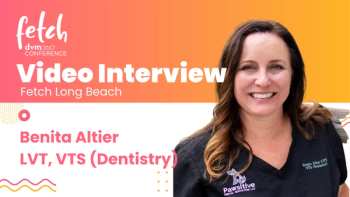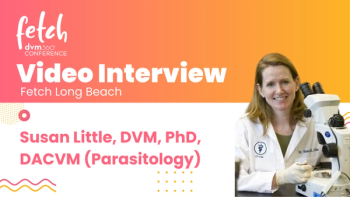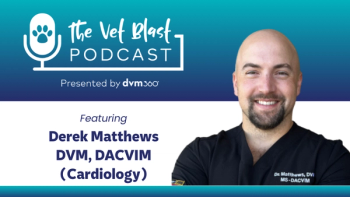
Paws and profits: Diagnostics company appoints Nobel laureate to its board, and more
New leadership moves, recognition, and achievement.
A 2013 Nobel Prize laureate has joined a molecular diagnostic company’s board of directors. Meanwhile, the American Veterinary Medical Association (AVMA) has appointed a longtime member as its new assistant executive vice president in place of David E. Granstrom, DVM, PhD, DACVM (Parasitology), who retired from office this April. Additionally, the UC Davis School of Veterinary Medicine has a new professor of veterinary orthopedics who brings a One Health approach to her research.
Continue reading to learn more about each of these individuals.
James Rothman, PhD, board of directors, Alveo Technologies
Alveo Technologies, a molecular diagnostics company, appointed James Rothman, PhD, to its board of directors this past spring. Rothman won the Nobel Prize in Physiology or Medicine in 2013. He and 2 fellow laureates were awarded for “their discoveries of machinery regulating vesicle traffic, a major transport system in cells.”1 Rothman is also the founder of the Nanobiology Institute at Yale University in Connecticut.
“Dr Rothman is a world-renowned scientist whose expertise will be an asset to our board as we strive to reshape molecular diagnostics in the spirit of a One Health approach by enabling rapid pathogen detection and decision-making at the point of need to drive actionable insights and achieve better outcomes,” Shaun Holt, CEO of Alveo, said in an organizational release.1 “His understanding of the academic markets will also be key as we continue to build partnership programs in this area, as well as in industry, to drive innovation.”
Currently, Rothman is the Sterling Professor of Cell Biology at Yale, a member of the National Academy of Sciences and its Institute of Medicine, and a fellow of the American Academy of Arts and Sciences. His work on vesicle trafficking and membrane fusion has earned him multiple accolades, including the King Faisal Prize in Science, the Gairdner Foundation International Award, the Richard Lounsbery Award of the National Academy of Sciences, the Heineken Foundation Prize of the Royal Netherlands Academy of Arts and Sciences, the Louisa Gross Horwitz Prize of Columbia University, the Albert Lasker Award for Basic Medical Research, and the Kavli Prize in Neuroscience.
Kent McClure, DVM, JD, assistant executive vice president, AVMA
Kent McClure, DVM, JD, chief advocacy officer for the AVMA, was elected as the organization’s new assistant executive vice president. McClure first joined the AVMA in 2017 as chief government relations officer.
For more than 10 years, McClure has also been a member of the AVMA Trust Board of Trustees. During his tenure at the AVMA, McClure has overseen the organization’s advocacy efforts, addressing issues such as noneconomic damages for pet loss, scope of practice, telemedicine, and xylazine at federal and state levels and in the courtroom.
“I’m honored to continue to serve and advocate for the veterinary profession in this expanded capacity. I am deeply appreciative of the ongoing support I have received from the board and AVMA’s CEO and executive vice president, Dr Janet Donlin,” McClure said in an AVMA news release.2
Heidi Reesink, VMD, PhD, DACVS-LA, professor, UC Davis School of Veterinary Medicine
The UC Davis School of Veterinary Medicine announced a new professor of veterinary orthopedics: Heidi Reesink, VMD, PhD, DACVS-LA. In her new position, Reesink will oversee clinical appointment with the William R. Pritchard Veterinary Medical Teaching Hospital’s equine surgery and lameness service and will have a research laboratory in the school’s JD Wheat Veterinary Orthopedic Laboratory.
Reesink specializes in the pathophysiology and treatment of musculoskeletal disease, including osteoarthritis, tendinopathy, and fracture. According to UC Davis, her team aims to advance the development of One Health therapeutic design and strategies focused on restoring cartilage health, improving comfort, and prolonging joint longevity and patient mobility for human and animal patients.
“I’ve already met with researchers at the medical school to discuss how we can work together in researching similarities between horses, dogs, and humans. Collectively, we can learn more about the commonalities of joint disease in terms of identifying biomarkers, monitoring disease progression, and guiding targeted treatments,” Reesink said in a university report.3
References
- Alveo Technologies appoints Nobel laureate, Dr James Rothman, to its board of directors. News release. Alveo Technologies. April 8, 2025. Accessed July 1, 2025.
https://www.businesswire.com/news/home/20250408790200/en/Alveo-Technologies-Appoints-Nobel-Laureate-Dr.-James-Rothman-to-its-Board-of-Directors - McClure promoted to AVMA executive position. News release. American Veterinary Medical Association. May 5, 2025. Accessed July 1, 2025.
https://www.avma.org/news/mcclure-promoted-avma-executive-position?utm_source=delivra&utm_medium=email&utm_campaign=todays-headlines-news - Warren R. UC Davis welcomes equine surgeon and orthopedic researcher Dr Heidi Reesink. UC Davis School of Veterinary Medicine. April 10, 2025. Accessed July 1, 2025.
https://www.vetmed.ucdavis.edu/news/uc-davis-welcomes-equine-surgeon-and-orthopedic-researcher-dr-heidi-reesink
Newsletter
From exam room tips to practice management insights, get trusted veterinary news delivered straight to your inbox—subscribe to dvm360.






